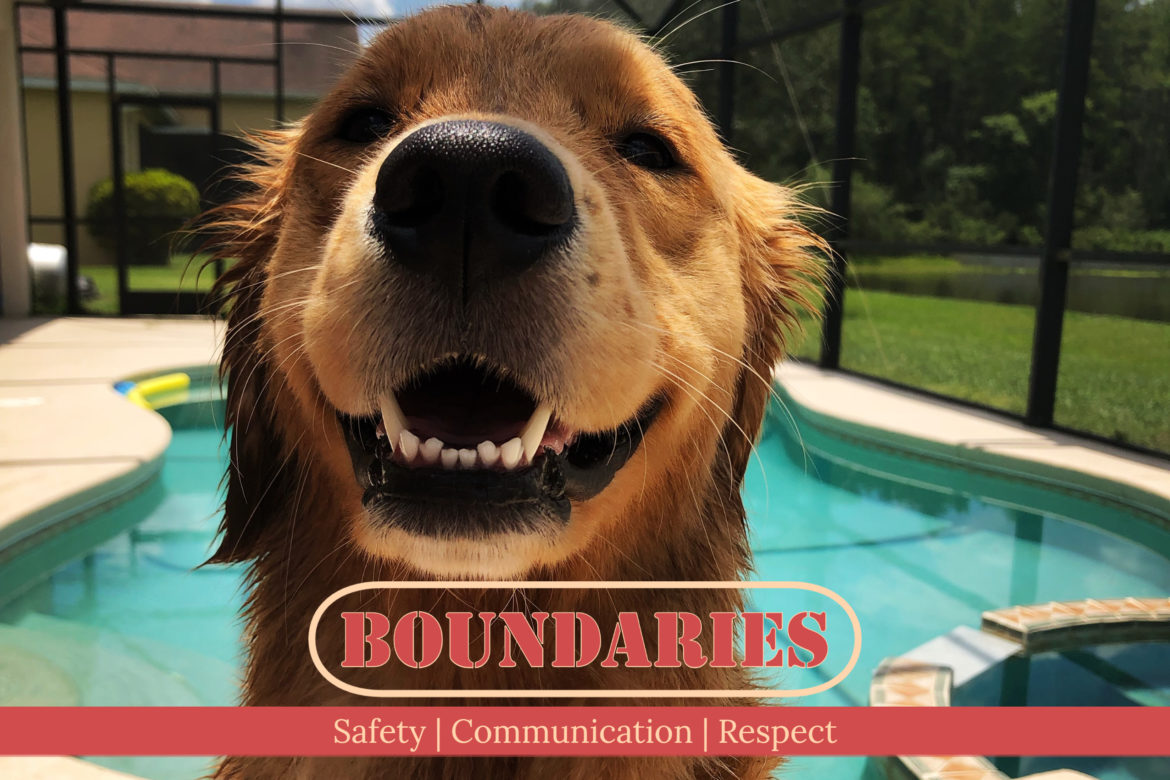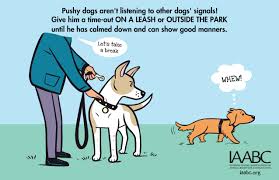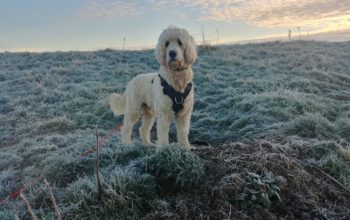Why Establishing & Maintaining Boundaries is Important
IN ANY RELATIONSHIP, BOUNDARIES ARE ESSENTIAL FOR THE HAPPINESS AND SAFETY OF BOTH PARTIES. THIS APPLIES TO BOTH HUMANS AND DOGS. PET DOGS (INCLUDING ASSISTANCE DOGS) NEED BOUNDARIES IN A VARIETY OF WAYS AND FOR MANY REASONS, WHICH WE EXPLORE IN THIS POST
Author: Dory Adelie
In this context, boundaries aren’t just physical limits of where a dog can access (“boundary training”); we are talking about social interactions, communicating acceptable limits and respecting personal space. Also, it is important to note that this article is not written from an “alpha” mindset – it is actually neutral, focusing on the basis of mutual respect, communication, manners and personal space resulting in safety and happiness. So whatever ethos you may have about dog training, boundaries are still important.
In Short
- Teach your puppy to respect other dogs’ boundaries
- Train and reward recall; keep them on a lead until they can recall
- Know dog body language and good/bad play manners
- Advocate for your dog
- Get to know your dog’s stress signals in different situations
- Respect your dog’s personal space
- Follow through with commands
- Ensure your dog gives you personal space
- Always monitor children and dogs interacting
- Listen to any dog’s warnings and act accordingly (give them space)
Other Dogs
As a dog owner, it is our responsibility to guide our dogs to be able to communicate, set and respect boundaries – for everyone’s safety. When it comes to communicating their limits with other dogs, generally dogs have a natural way of doing this and most are able to understand and “speak dog” well enough to navigate social interactions with other dogs.
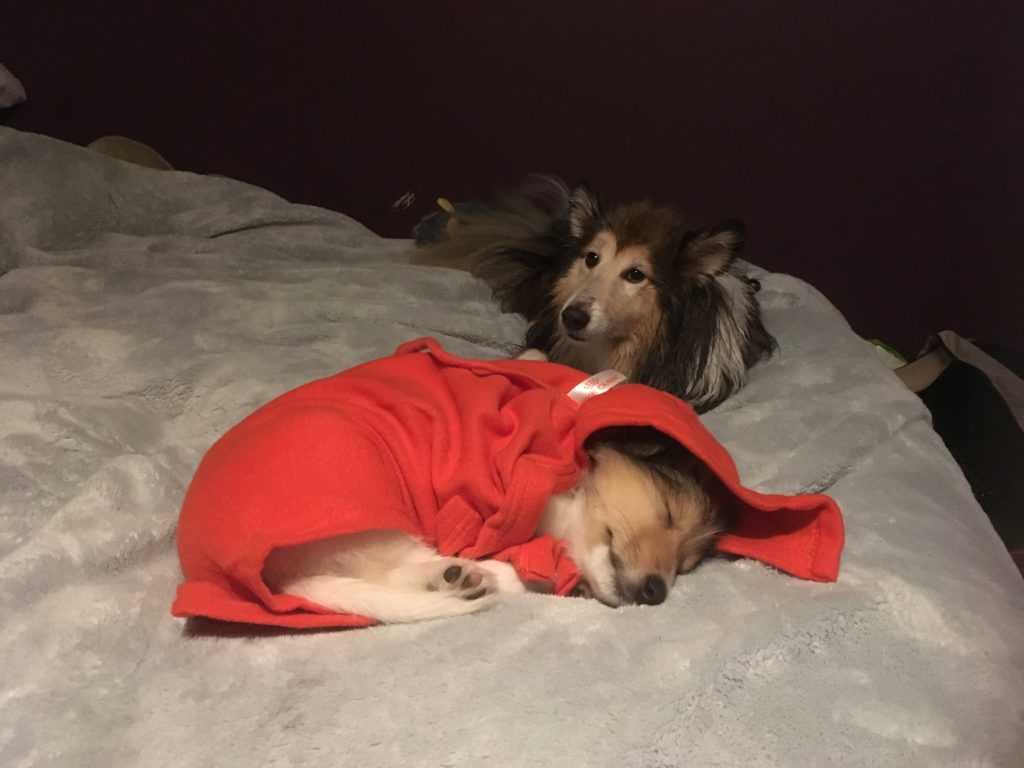
Puppy Po with Adult Eli 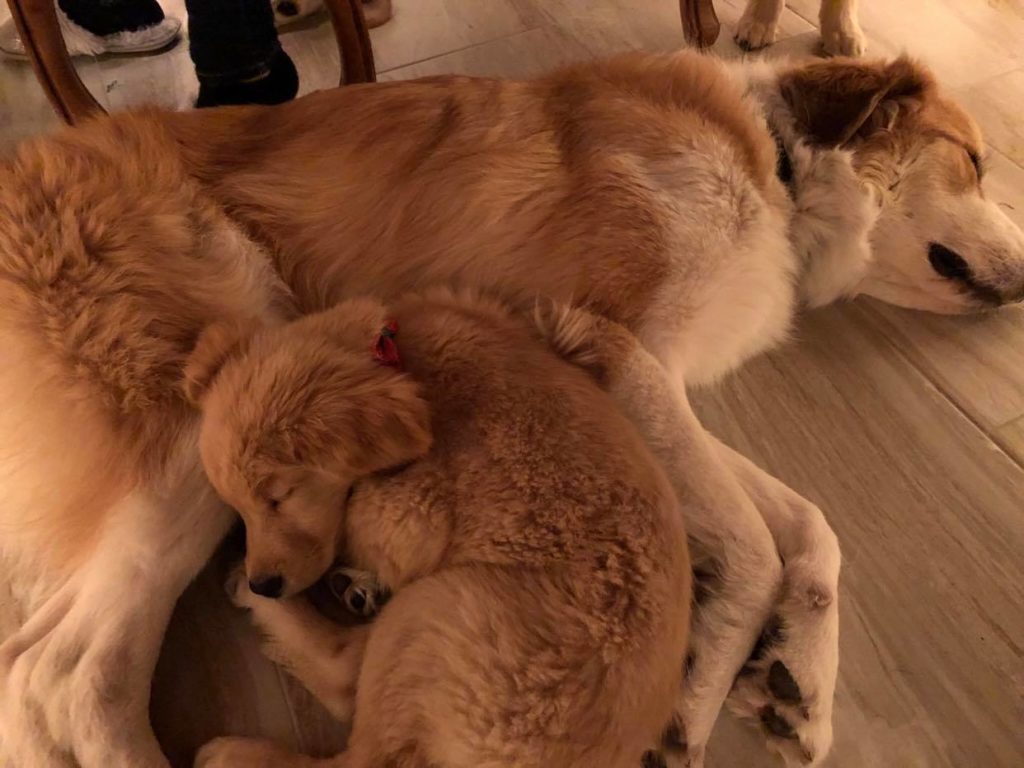
Puppy Sparrow with adult dog, Saxon
However, that doesn’t mean they always get it right – an overexcited pup will likely misread and/or straight up ignore signals of other dogs communicating their boundaries…usually until they have crossed a line. But that is a learning curve for them, and often puppies need to be corrected by a couple of dogs for them to get the message. It is best if these dogs are ones known to you, so you can read their body language and make sure everyone stays safe. Don’t choose to let your inexperienced pup interact with dogs who are known to be aggressive, fearful/anxious, or bad for resource guarding as this is setting up a potentially dangerous, out of control situation and may result in an anxious or fearful pup.
Note: an acceptable correction from another dog is essentially a warning e.g. a growl, a change in stance to a more dominant one, or a brief snap (usually in the air) – this is not the same as an attack, should not be long lasting and should not result in your puppy being in pain.
If your dog (whatever age) is overzealous with their greetings or excessive friendliness (looking at you, Goldens!!!) or they find it hard to read other dog’s body language, you may need to manage this on their behalf, especially when it comes to strange dogs. You don’t know how a strange dog will react (or how people will feel), so it is better to be safe than sorry and keep them on the lead when out and about until they are better with this. You can use a long-line lead (preferably not a retractable flexi-lead) so they can still explore but you have a bit more control when needed – practise using this away from other dogs first so you feel confident. Try to find something that engages them (strong smelling treats, a toy, a ball…anything they really like) to get their interest too. Simultaneously, with all dogs, we need to be working on recall with them so we can call our dogs off anything; whether it be another dog, a different animal or a human. Reward a successful recall highly in order to reinforce that it is a desirable behaviour all round. Recall is an essential safety mechanism.
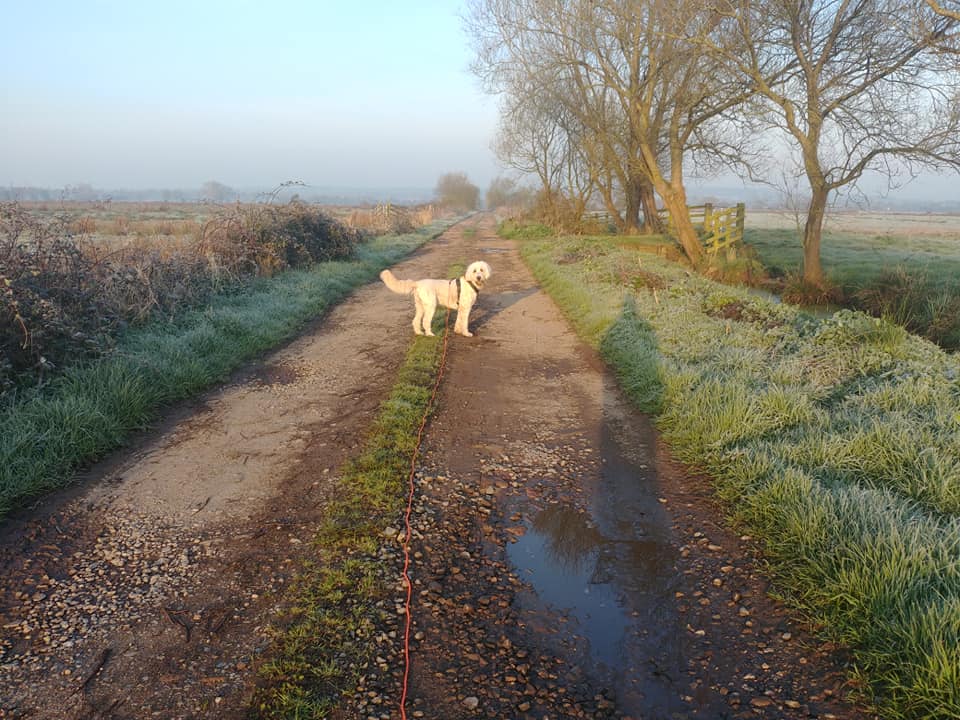
It is beneficial for dog owners to have a good idea of dog body language, particularly potential warnings and cues of discomfort, so we can identify this in either our own pups or in other dogs. If your dog is showing signs of discomfort around a strange dog, it is sensible to remove them from the situation (calmly calling them away and/or communicating to the other owner that you are moving away from them). This applies in reverse as well – if the other dog’s owner hasn’t noticed their dog is looking uncomfortable, then take the initiative and call your dog away. It doesn’t have to be a conflict, and it is acceptable for you to remove your dog whenever you want. It doesn’t matter if their dog “is friendly”, if your dog is uncomfortable, you are entitled to ease that by changing the situation. Signs of discomfort include having their hackles up (hair raised), tail between legs, spinning away from the other dog, baring teeth, trembling, growling, trying to hide. Advocate for your dog.
It is important for us as dog owners to also know what is and isn’t appropriate or “good manners” for our dogs, particularly when interacting with dogs they don’t live with. Things like excessively sniffing or closely following another dog, jumping on top of them, pinning, humping or mounting them, excessively making contact (pulling on ears and neck etc.) and not listening to the other dog’s cues are all bad manners in play and interaction. You may choose for your dog to play more freely with a dog they live with or interact with frequently (and let them sort it out themselves, within reason) but that is not appropriate when dealing with a strange dog as the situation can be a lot more unpredictable. Generally “letting them sort it out themselves” is not a good solution even with dogs that know each other well, if it is continuing and/or escalating – in this case as caregivers we should intervene, CALMLY and SAFELY. Additionally, typical dog play behaviour may vary from dog to dog (for example, your dog may tend to roll onto their back in passing during play as standard whereas if another dog did that they may be trying to communicate surrender and appeasing the other dog into ending the interaction due to fear). So get to know your dog.
Humans
It isn’t just other dogs that our pups need to understand how to communicate and respect boundaries with – interactions with humans must involve boundaries as well, from both sides.
Dogs need to learn how to not be in your face all the time, how to follow instructions and particularly how to give humans space. Ultimately the onus of teaching this falls on you as a dog owner, and is a matter of training, consistency and reinforcing; as well as rewarding them for doing the right thing.
Examples of this include having a “place” they go to e.g. a mat or a bed, so they’re not under your feet; having areas in the house that they don’t go in (e.g. the cooking area of the kitchen). While this article is not focused on physical barriers as boundaries, e.g. baby gates, crates, playpens etc., they are a valuable resource so ensure safety of all humans, dogs and other pets by making use of physical barriers if needed.
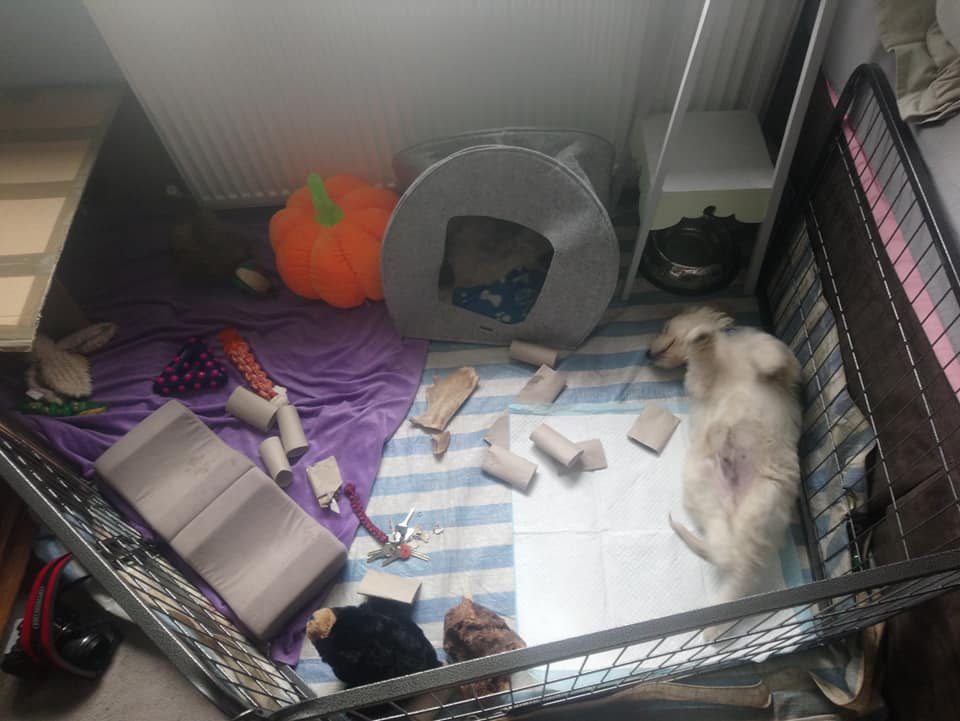
In order to minimise your dog feeling the need to be in your face all the time, you need to make sure they are sufficiently stimulated through having toys to play with, activities and exercise, as well as enough time interacting with you (most dogs do want to interact with you at least some of the time). This easily leads onto the issue of separation anxiety – as owners it is our responsibility to minimise our dog’s chances of separation anxiety and/or work on it if it already exists. A compromise between spending time away from your dog but still being able to ensure their safety is the use of a dog playpen which can be suitable for any age or size dog and have toys etc. accessible in it.
Reinforcing boundaries for your dog means following through on any commands that you give – if you tell them to go in their place, they need to go in their place. This isn’t some overly dominant/alpha thing; it is just a matter of being clear in what you are communicating and that when you give a command, your dog is required to follow it. This concept then becomes invaluable when it comes to situations of safety (for example, a “leave it” needs to be followed if they’re about to pick up some chocolate that was left within reach by accident; a “wait” needs to be followed if they’re about to run into the road or the path of a bike, a “drop it” needs to be followed if they’ve got something harmful to them in their mouth that may cause a digestive obstruction if swallowed). Following through means clarity and safety for your dog.
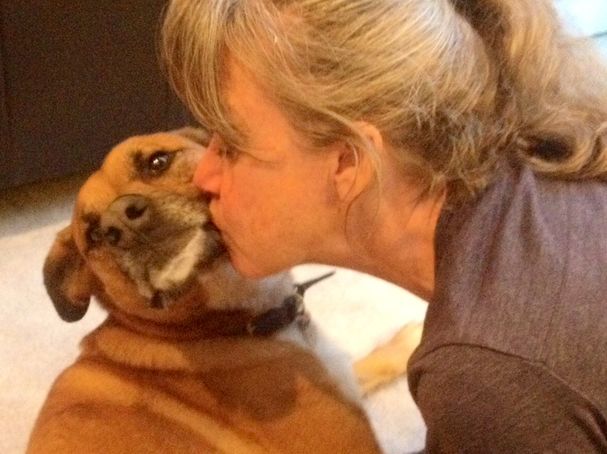
It isn’t just a one way street though, as humans we need to learn to respect our dog’s boundaries as well. They may love us very much but do not need us in their face all the time (much like we don’t need the reverse). It is key that a lot of it is about choice – a dog may choose to be velcroed to you one minute, but give themselves space the next. As humans, we need to respect this, the same as we should with another human. We also need to be aware that the way we communicate love to another human (e.g. hugging) is not how dogs communicate love and therefore is potentially uncomfortable for them. Recognising this is essential to avoid negative interactions which may lead to a dog feeling the need to bite. According to the results of one study exclusively about dog bites to the face, in 95% cases the bite was preceded by the person either bending over the dog or putting their face close to the dog’s face i.e. invading their personal space.
When it comes to children, make sure to educate them as early as you can about giving your dog space and always monitor your children and dogs. Children are more likely to miss a dog’s cues that they are getting uncomfortable and therefore the situation is more likely to escalate towards a bite, so it is the responsibility of adults to make sure everyone is protected. In the aforementioned study, over two-thirds of dog bites to the face happened to children, with the majority of these to children under 12 years old. Advocate for both your dog and your children by separating them unless they can be fully supervised. Even if your dog tolerates something they’re not keen on, doesn’t mean they should have to and it is pushing their boundaries to allow it to happen continually.
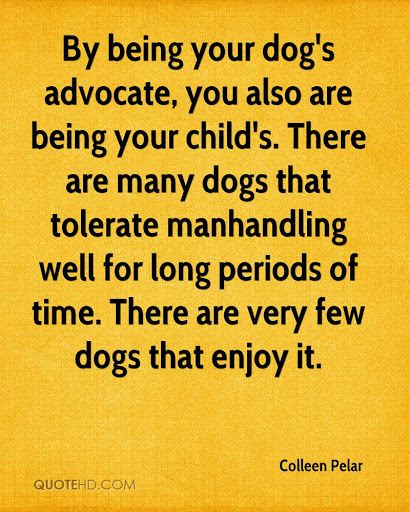
Equally our pups need to learn that they can communicate discomfort rather than escalating straight to an attempted bite – they need to feel safe to do this so if a dog walks away from a cuddle, let them, even if you really want it; if they growl because someone’s face is in their face, acknowledge the warning, give them space…oh and don’t do it again. Many people correct something like a growl, or think it is inappropriate or aggressive – however it is actually a communication of a warning and is much preferable to the full action (a bite). It is important to learn about dog stress signals in general (which slightly differ to discomfort during play with dogs), so that you can recognise these signs and stop whatever you are doing that could be resulting in your dog being uncomfortable. We have a page on this specific topic as well. And remember that dogs do differ, so learn your particular dog’s signals.
**additional reading**
Our Related Articles:
The Home Environment
Implementing Boundaries in Training and Enrichment Sessions
External Resources:
Establishing Boundaries & Limitations To Your Dog
AKC: Boundary Training for Puppies
AKC: Teach Your Dog To Back Off


